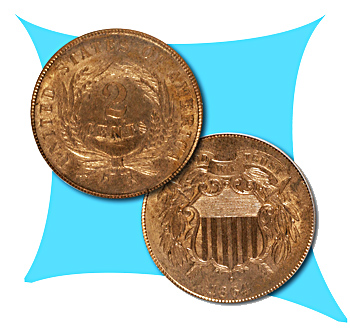 By Dr. Sol Taylor
By Dr. Sol Taylor
"Making Cents"
Saturday, July 12, 2008
| T |
Thus, in a short time, we will face some alternatives. One will be cents made of a cheaper alloy such as steel. There is a plan in Congress to make magnetic cents. This was tried in 1943 and met with no success and was dropped in one year; the new coins looked too much like dimes and they would not work in machines that have magnets.
Other choices include making the new cent out of an aluminum alloy, which is much cheaper than either copper or zinc and much lighter in weight. One pound of aluminum could produce up to 450 coins of the same size as the current cent, while one pound of bronze alloy can make only 150 coins, and the zinc alloy cent about 175 coins.
How did other countries handle the elimination of their one cent coinage? Great Britain went off the pence/pound system in 1970 and has 100 new pence to the pound. The one-penny coin has faded from use, and the newer two-pence coin readily circulates.
The European Union (EU) has a decimal system which includes both the eurocent and the two-eurocent piece.
In 1864, Congress authorized a two-cent coin which was issued annually from 1864 to 1872, with only proof (collector) coins issued in 1873. The mintage figures dropped each year from 1864 to 1872 as the public did not readily accept nor use the new coinage.
During this period there were circulating three-cent coins (both silver and copper-nickel versions). With the cent an important element in commerce at the time, these intermediate coins did not quite fill the gap.
If the Untied States drops the cent altogether, it may be time to resurrect the two-cent piece. It could be a copper-clad zinc model of the same proportions of the current one cent coin or a completely different version of aluminum, steel, or other alloy.
If the Mint stops making one cent coins, in a few years they will vanish from circulation, either being redeemed for cash or hoarded. Great Britain has destroyed millions of the old copper farthings, half pennies and pennies that were current prior to the 1970 changeover. The few pieces remaining are in personal collections or hoards. They do not circulate anymore.
Canada has followed the United States coinage pattern going back to the days of Queen Victoria. Canada's current coinage follows basically the size (but not the alloy anymore) of our coinage. Thus, Canadian one-cent and five-cent coins show up in cities close to Canada, and likewise, U.S. coins are found in most Canadian cash registers. Their dimes, quarters and half dollars are magnetic and thus do not show up that often in the U.S. They also readily use $1 (loonie) and $2 (toonie) coins instead of $1 and $2 bills, which are obsolete. If the U.S. reintroduces a two-cent piece, chances are, Canada may follow suit and stop making one-cent coins, too.
A coinage makeover is inevitable, since metal prices are forcing the changes in the cent and nickel while the obsolete size of the dimes needs to be addressed. The half dollar has not been issued for general circulation since 2002 and is essentially no longer a coin of the realm. The $1 coins of recent years do not circulate, and until we stop making $1 bills, they have little chance of general acceptance.
Our monetary system will change in the 21st century — but perhaps a coin at a time — and the two cent piece may be the new kid in the system.
Perhaps we can honor John Adams, our second president, on the new denomination. We shall see.
©2008 SCV COMMUNICATIONS GROUP & SOL TAYLOR · ALL RIGHTS RESERVED.

![[Most Recent Quotes from www.kitco.com]](http://www.kitconet.com/images/quotes_special.gif)
